
Alfred the Great still smiles on his old capital
[caption id="Winchester_img1" align="aligncenter" width="1024"]
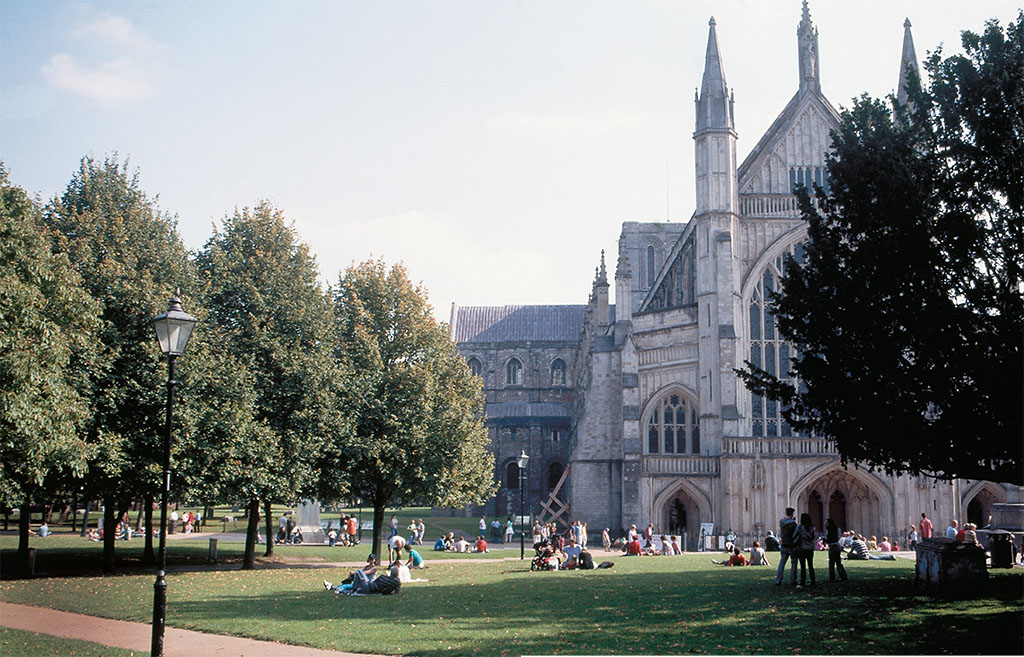
DANA HUNTLEY
Ihave long loved Winchester and return to the city time and again. In the city center, the Broadway at the bottom of the High Street is dominated by a huge bronze statue of Alfred the Great. Alfred made Winchester the capital of his Wessex kingdom and it went on to be England’s capital until after the Norman Conquest. Alfred is holding his broad sword aloft, pointing to the well-equipped Tourist Information Centre (TIC) at the Guildhall just down the block.
At the local TIC I find out what is going on in town, pick up a street map of the downtown and the notable local sites, collect pamphlets or guides that strike my fancy, ask questions and even get advice or booking services for suitable accommodation.
[caption id="Winchester_img2" align="aligncenter" width="1024"]
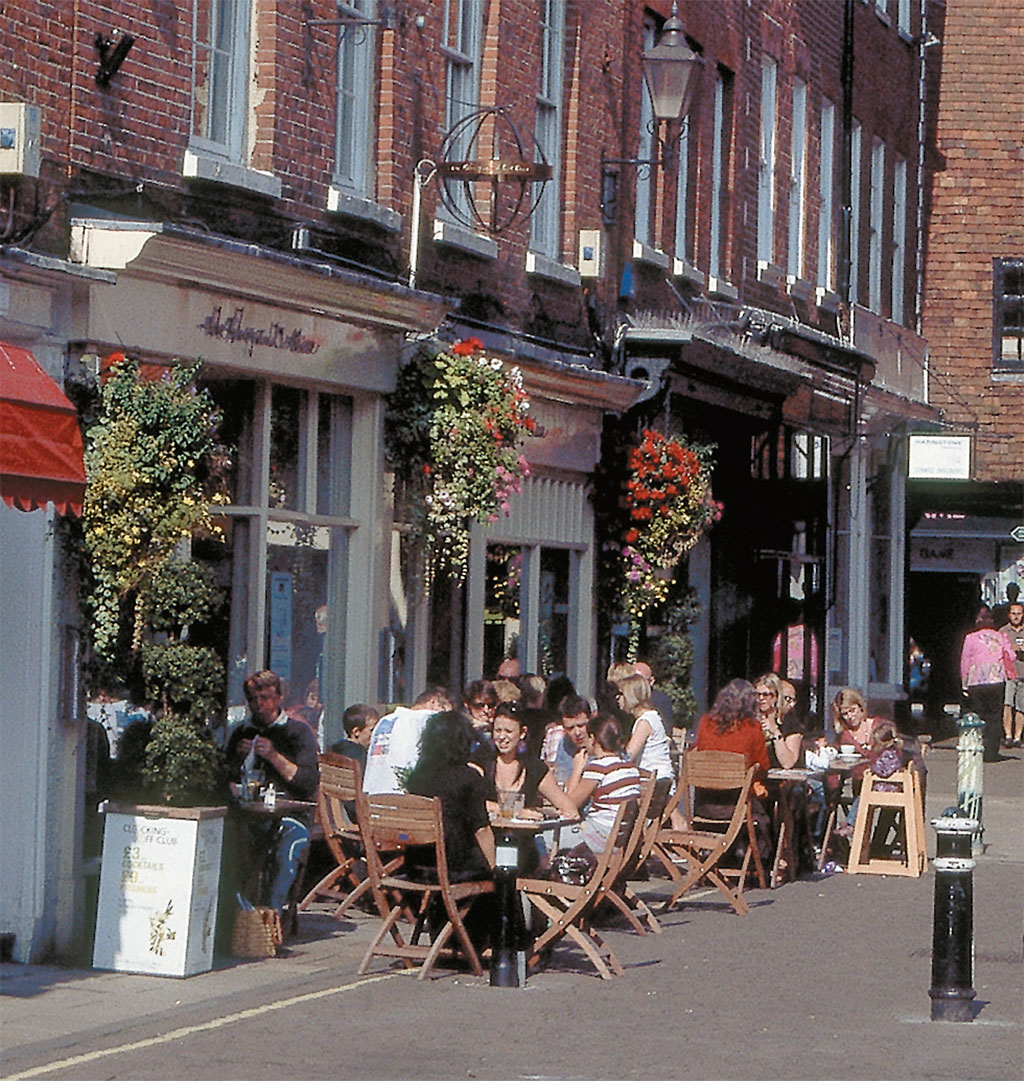
DANA HUNTLEY
Where to start
Just behind the High Street to the west, as Broadway narrows into the pedestrianized commercial precinct, lies the Close of Winch ester Cathedral. A bright, clement lunchtime any time of year finds the broad green lawns covered with people picnicking and collecting the sun.
Long after Winch ester’s civil influence declined, the city remained a powerful ecclesiastical center. The Bishop of Winch ester was for centuries among the country’s richest and most powerful nobles.
On a tombstone in the northwest corner, the inscription inscription captures well the historic character of Winch ester. It seems young Thomas Thetcher died at age 26 in 1764: “of a violent fever contracted by drinking Small Beer when hot.” The epitaph is the testimony of his comrades:
“Here sleeps in peace a Hampshire Grenadier. Who caught his death by drinking cold small beer. Soldiers be wise from his untimely fall And when ye’re hot drink Strong or none at all.”
A generation later, the decaying tombstone was restored by the officers of the Garrison, who added this postscript:
“An honest soldier never is forgot Whether he die by Musket or by Pot.”
Winch ester Cathedral is one of my favorites. While it is not a towered or steepled building, it is the longest of any medieval cathedral in Europe. The foundation stones of the original Saxon 7th-century minster can be seen in the close, while the present Gothic edifice was begun in 1079 (though work continued into the 1300s). Like all such great English cathedrals, it houses a millennium of stories and ghosts. St. Swithins, assorted Saxon kings, Jane Austen and Isaak Walton are among those whose final resting place is within its walls.
Behind the cathedral close lies College Street, where Jane Austen spent her last months in 1817, and Winch ester College. Oldest of England’s great public schools (founded 1382), the college offers guided tours daily but is not otherwise regularly open to visitors.
The High Street is an English classic, a mix of assorted eateries and pubs, predictable chain shops and eclectic boutiques of every variety. Regardless of the bustle, it always seems to have an upbeat and positive vibe. Around the cathedral close and the High Street are myriad options for lunch or refreshments, from table d’hote luncheons to pub grub. Two Cornish pasty shops on opposite corners do a brisk trade throughout the lunchtime hours.
[caption id="Winchester_img3" align="aligncenter" width="807"]
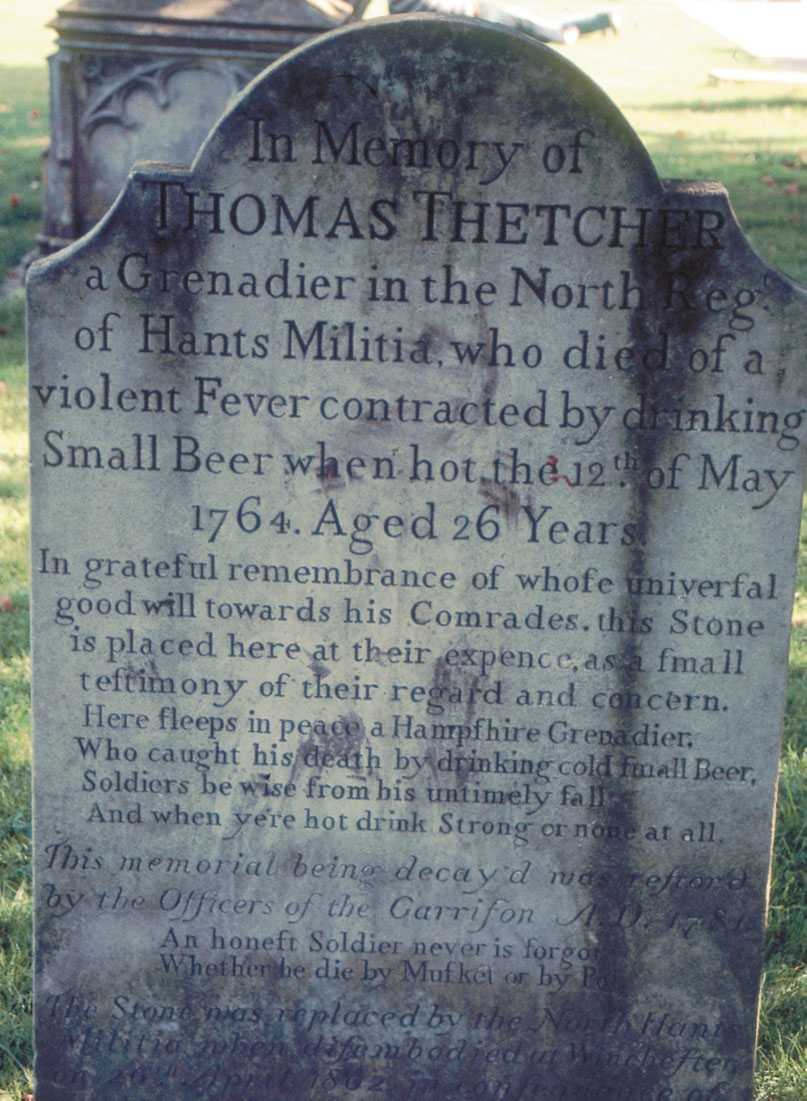
DANA HUNTLEY
[caption id="Winchester_img4" align="aligncenter" width="1024"]
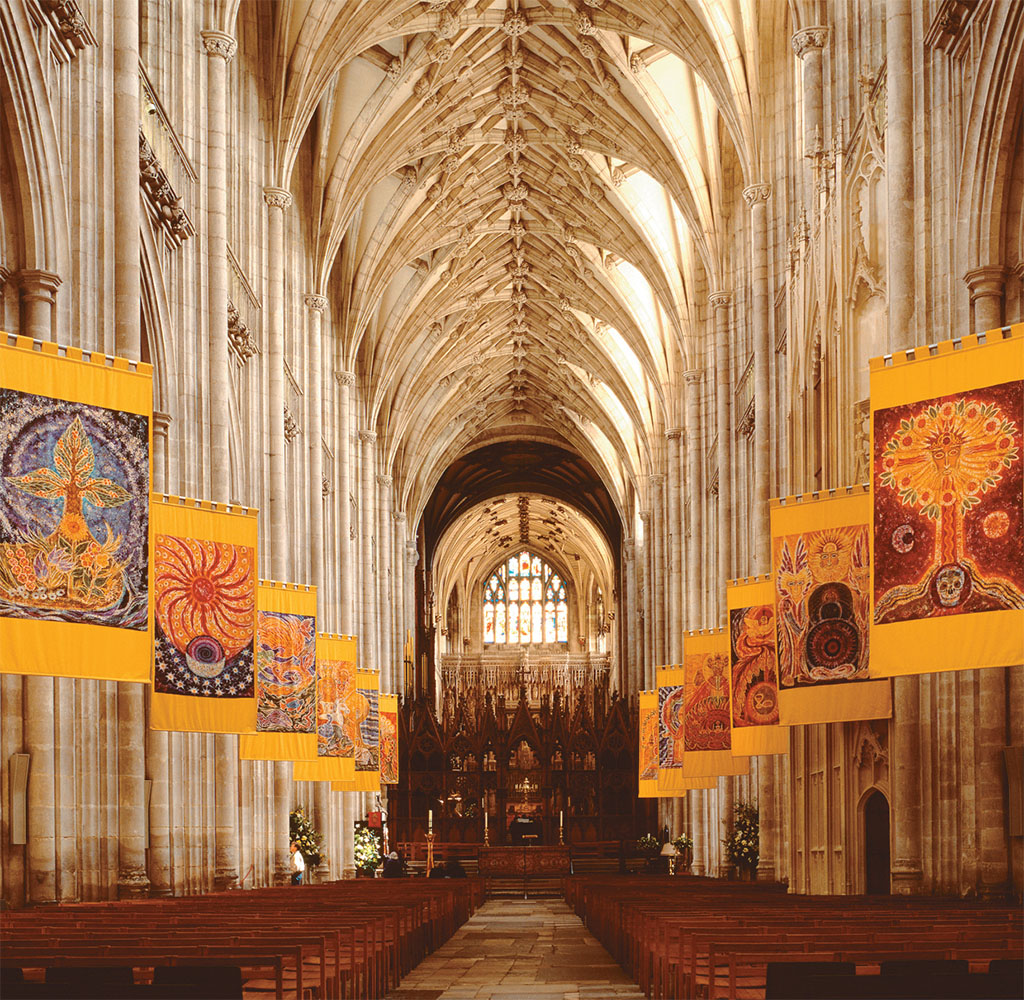
DANA HUNTLEY
At the top of the High Street stands the Westgate, the only one of the four ancient gateways to the medieval city still in place. Admission is free to the modest museum in the Westgate, which served 150 years as a debtors’ prison. Rooftop views from the gate tower down over the High Street, the city and the surrounding countryside are matchless.
[caption id="Winchester_img5" align="aligncenter" width="968"]

DANA HUNTLEY
[caption id="Winchester_img6" align="aligncenter" width="1024"]
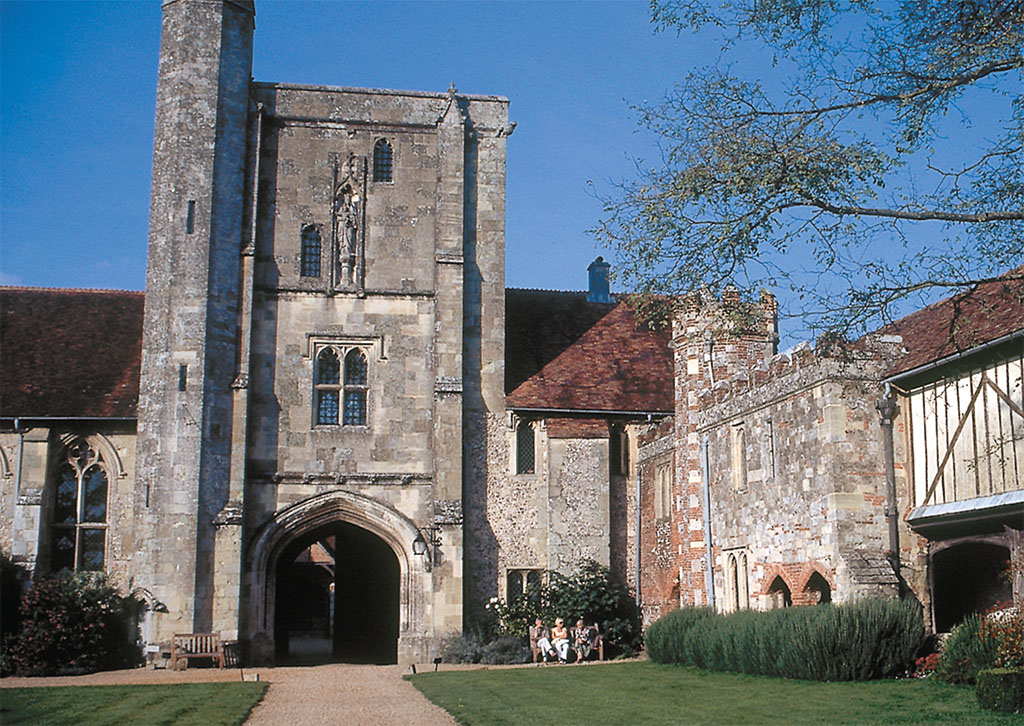
DANA HUNTLEY
IN THE VICINITY
Just a few miles to the southwest lies pretty Romsey Abbey and Broadlands. It’s a quick trip to Hampshire’s majestic New Forest and the historic harbor of Portsmouth.
On the outside of Westgate sit the modern offices of the Hampshire County Council. On the inside sits the Great Hall, where King Henry III did business in the 1200s.
William the Conqueror built Winch ester Castle in 1067. All that remains is the magnificent 13th century Great Hall, renowned for its Purbeck stone columns, pointed arches and plate tracery windows—all the great features of early English Gothic architecture. In truth, however, just as many visitors come to see the mammoth dartboard on the wall, known as King Arthur’s Round Table. It isn’t really, though the table has been here for 700 years, and the romance remains.
The Peninsula Barracks next door houses five distinct military museums: the regimental museums of the Royal Hampshire Regiment, the Gurkas, the King’s Royal Hussars, the Rifles and the Adjutant General’s Corp. It is considered the most sizable collection of regimental history outside London. It’s an A-list visit for those with a real fondness for military history; how much time you spend here depends on your level of interest.
Meander along the River Itchen
By now, it is probably mid-afternoon of a day’s visit. You might meander back down the High Street to Broadway and the City Bridge. The old river crossing was once the only way into the city. The last surviving bit of the city’s Roman wall stands nearby. Straddling the River Itchen today, the City Mill, which is preserved by the National Trust, has a great millrace and offers regular demonstrations of the mill in action.
Beside the river, a broad footpath runs toward the lush water meadows. It is a gorgeous riverside walk any time of year. Just a few hundred yards along lie the ruins of Wolvesey Castle, open for exploring. Now under the care of English Heritage, Wolvesey was built by Bishop Henry de Blois in the 12th century, when his brother Stephen was king. It remained the palatial fortress of Winch ester bishops for the next 500 years.
[caption id="Winchester_img7" align="aligncenter" width="1024"]
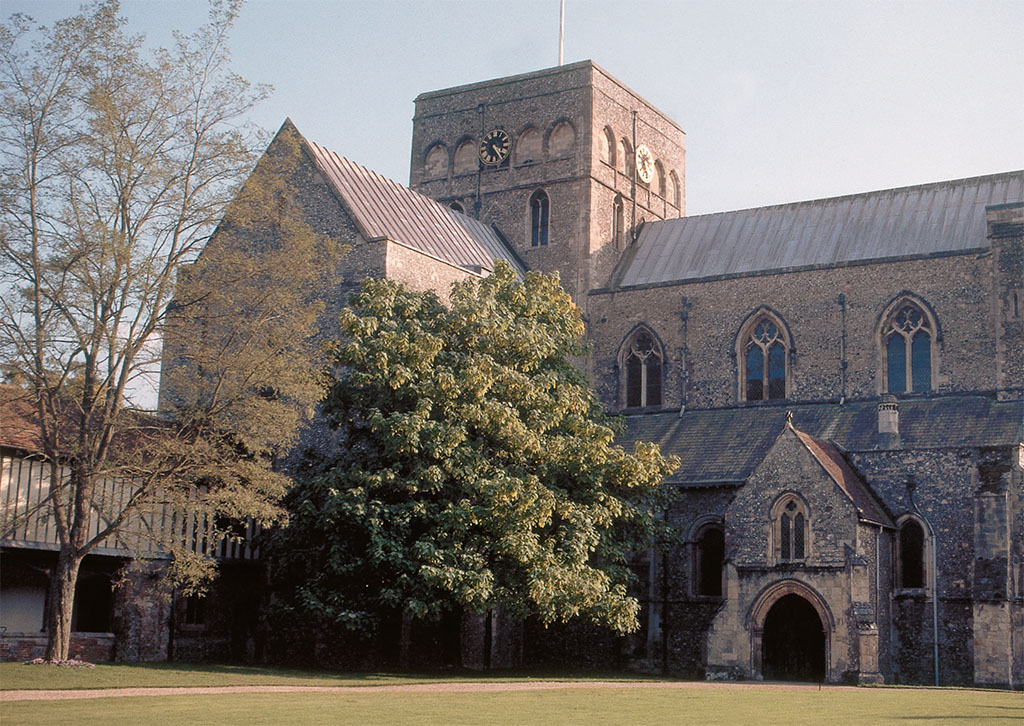
DANA HUNTLEY
If time and foot-power permit, follow the path beside the tranquil Itchen past the playing fields of Winch ester College and into the water meadows, with swans and ducks on the river and birds in the undergrowth. Not quite a mile from City Bridge, the path opens into a field framing the old, gray stone buildings of St. Cross.
The same Henry de Blois who built Wolvesey Castle also built the Hospital of St. Cross in 1132 to provide homes for genteel old men of poverty. England’s oldest almshouse and charitable institution, St. Cross is still the home of 25 Brothers and happy to have visitors. The quiet quadrangle houses terraced cottages, a beautiful Norman church, the Brethren’s Hall, lovely gardens and assorted outbuildings. The Wayfarer’s Dole, a St.Cross tradition of centuries remains: For the asking, a bit of beer and bread is given to any visitor at the Porter’s Gate. Today, Fullers London Pride is the sponsor of the famous tradition and provides the beer.
Thus fortified by the Wayfarer’s Dole, the stroll back into the city center will probably not leave much left of a day. And as with every day spent exploring in Britain, there are always choices we have to make. The choices in Winch ester are particularly varied and delightful, and are all accessible on foot. If you’ve not been to Winch ester, do put the old city on your list.
[caption id="Winchester_img8" align="aligncenter" width="829"]

DANA HUNTLEY





Comments